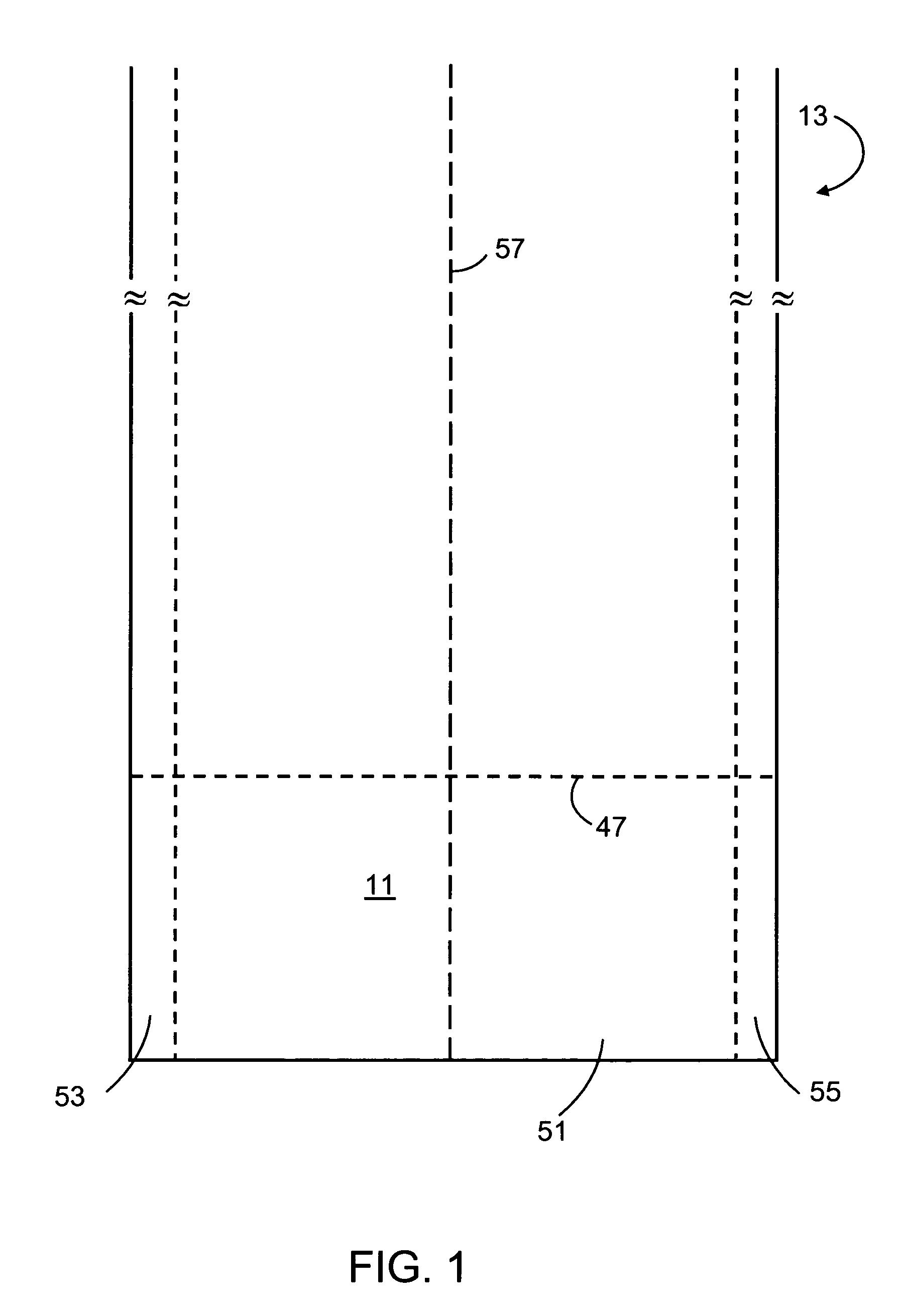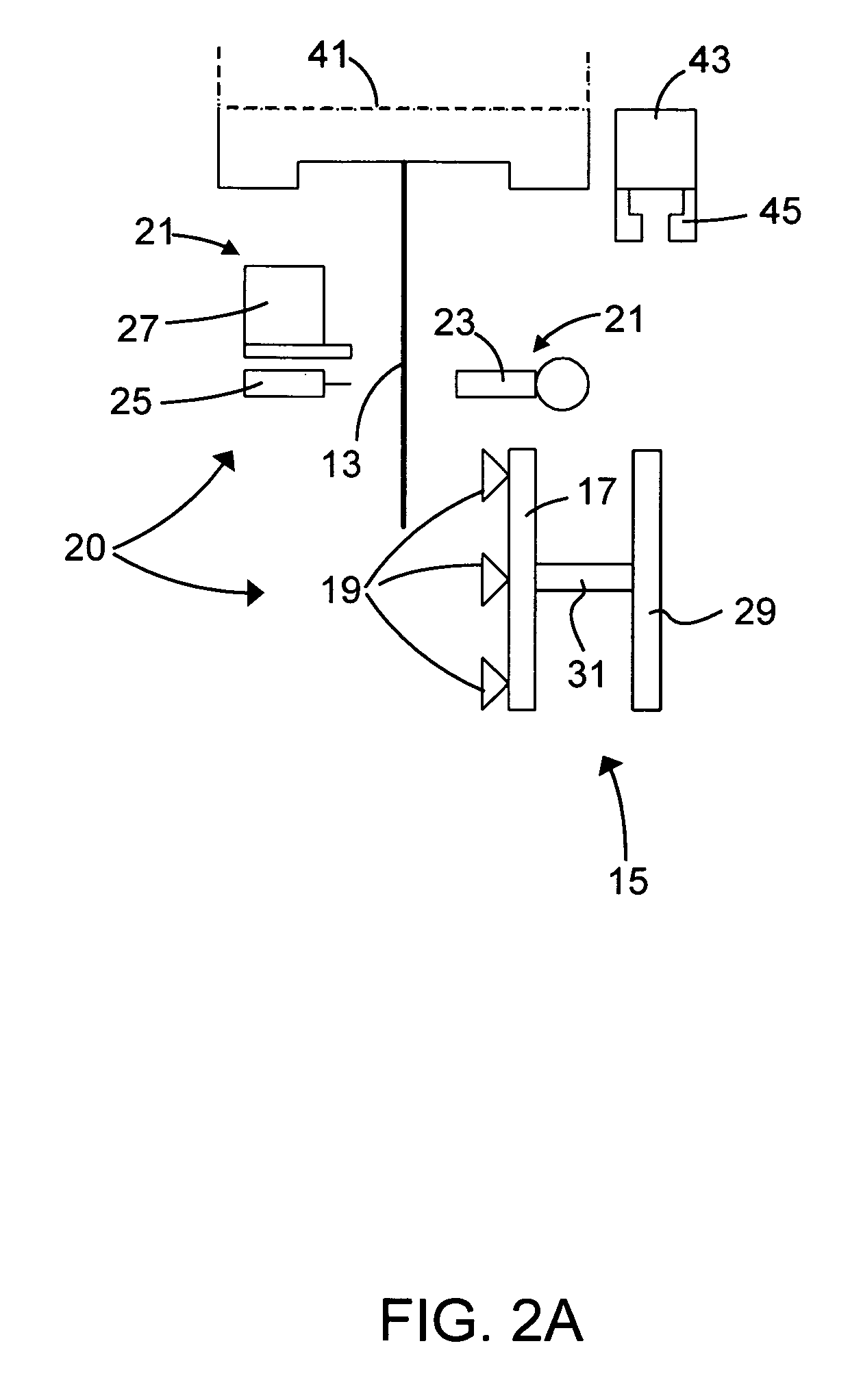Methods and apparatus for reducing stress variations in glass sheets produced from a glass ribbon
a technology of stress variation and glass ribbon, which is applied in the field of glass ribbon manufacturing, can solve the problems of substantial number of defective (rejected) displays, changes in the vacuumed-flat shape of glass sub-pieces,
- Summary
- Abstract
- Description
- Claims
- Application Information
AI Technical Summary
Benefits of technology
Problems solved by technology
Method used
Image
Examples
example
[0094] A ribbon of glass produced by a fusion process and having a thickness of 0.5 mm was manually constrained from movement in a horizontal plane along its edges at a vertical location below the separation line. Stress measurements were made on consecutive samples produced with and without such constraint. In particular, stress measurements were made along the four edges of the sheets.
[0095] The highest variations in stress levels were observed for the edge corresponding to the side of the ribbon closest to the glass inlet to the isopipe used to produce the ribbon. Those stress levels are shown in FIG. 7A for the unconstrained case. FIG. 7B shows the results for the same edge when constrained as described above. The significant reductions in the variations in stress levels are evident. Reductions in stress variations were also seen for the other three edges, but since the levels of stress for the unconstrained condition were lower, the reductions achieved by constraining horizont...
PUM
| Property | Measurement | Unit |
|---|---|---|
| length | aaaaa | aaaaa |
| thickness | aaaaa | aaaaa |
| lengths | aaaaa | aaaaa |
Abstract
Description
Claims
Application Information
 Login to View More
Login to View More - R&D
- Intellectual Property
- Life Sciences
- Materials
- Tech Scout
- Unparalleled Data Quality
- Higher Quality Content
- 60% Fewer Hallucinations
Browse by: Latest US Patents, China's latest patents, Technical Efficacy Thesaurus, Application Domain, Technology Topic, Popular Technical Reports.
© 2025 PatSnap. All rights reserved.Legal|Privacy policy|Modern Slavery Act Transparency Statement|Sitemap|About US| Contact US: help@patsnap.com



